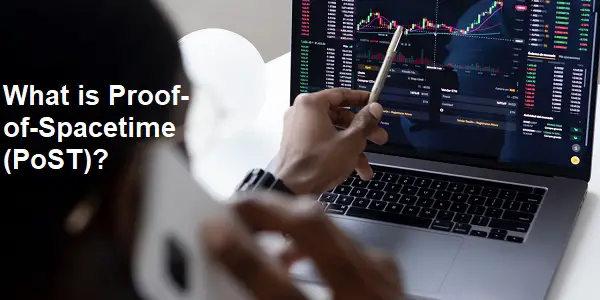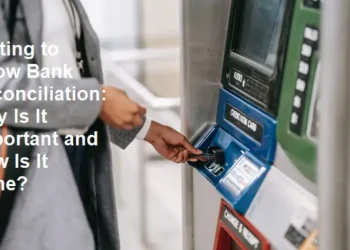Proof of spacetime (PoST) is a consensus mechanism used in blockchain networks to validate transactions and ensure network security. It does this by requiring users to prove ownership of a certain amount of disk space used to store network data. Proof of spacetime is an effective way to avoid Sybil attacks and maintain network integrity, so it is very important in the context of cryptographic security and network consensus.
History of Proof-of-Spacetime
Proof of spacetime is an evolution of the proof of work consensus mechanism, which was first introduced in 1993 by Cynthia Dwork and Moni Naor. Initially, proof of work was used as a way to avoid email spam by requiring the sender to complete a complex computational task before sending the message. The idea is that only people who really want to send messages will want to take on the task, thereby reducing the amount of spam recipients receive.
The proof of work idea was later adopted by Satoshi Nakamoto in his 2008 Bitcoin whitepaper, in which he used it as a way to guarantee the security of the Bitcoin network and prevent network abuse. However, with the increasing use of proof of work, some drawbacks began to emerge, such as the high energy consumption and costs associated with running complex computations.
Therefore, in 2016, a research team at the University of Maryland in the United States developed a new mechanism called proof of spacetime. The basic idea of proof of spacetime is to use the user’s disk space as a way to prove ownership and avoid Sybil attacks. By requiring users to store network data, proof of spacetime becomes more efficient than proof of work in terms of energy consumption and costs. Since its introduction, proof of spacetime has been used in several blockchain projects and continues to grow today.
How Proof-of-Spacetime Works
Proof of spacetime works by requiring users to prove ownership of a certain amount of disk space used to store network data. This process is called “proving,” and users who successfully prove ownership are called “provers.” Provers must retain a specified amount of network data in their disk space for a period of time called the “commitment period.” During this period, provers also have to prove that the data is still in their disk space by performing “challenges” or tests sent by the verifier.
After the commitment period is over, providers must complete a computational task called “proof of replication” to prove that the data stored on their disk space actually matches the data stored on the network. Provers who successfully complete proof of replication will be rewarded in the form of cryptocurrency or tokens associated with the network.
Thus, proof of spacetime combines proof of work elements with proof of storage elements to prove ownership and ensure network security. This makes proof of spacetime more efficient than proof of work in terms of energy consumption and cost, and is more effective in avoiding Sybil attacks.
Pros and Cons of Proof-of-Spacetime
Proof of spacetime has several advantages compared to other alternatives such as proof of work and proof of stake. One of the main advantages is efficiency in terms of energy consumption and costs. Proof of work requires a lot of complex computation and consumes a lot of energy, while proof of spacetime only requires a small amount of user disk space. This makes proof of spacetime more environmentally friendly and reduces the costs associated with performing complex computations.
Apart from that, proof of spacetime is also more effective in avoiding Sybil’s attacks. Proof of work can be disturbed by irresponsible parties by creating many nodes called “Sybil nodes” to try to control the network. However, by requiring users to prove ownership of disk space, proof of spacetime becomes more difficult for irresponsible parties to infiltrate.
Although it has several advantages, proof of spacetime also has several disadvantages. One of the main drawbacks is the issue of trust. Because proof of spacetime requires users to prove ownership of disk space, verifiers must trust that provers actually own the disk space they claim. This is a problem because verifiers can’t know for sure if provers actually have the disk space they claim.
In addition, proof of spacetime also has scalability problems. By requiring users to store network data in their disk space, proof of spacetime can be limited by the available disk space capacity. This can become a problem if the network continues to grow in size and requires more disk space to store data.
Nevertheless, several blockchain projects have developed ways to address these issues of trust and scalability, so proof of spacetime still has the potential to become an effective consensus mechanism in the future.
Proof-of-Spacetime Applications in Blockchain Projects and Network Security Systems
Proof of spacetime has been used in several blockchain projects and other applications. One project that uses proof of spacetime is Filecoin, a blockchain project that provides decentralized data storage services. Filecoin uses proof of spacetime to ensure network security and prevent Sybil attacks.
Apart from that, proof of spacetime has also been used in other projects such as Chia Network and Storj. Chia Network uses proof of spacetime as a way to ensure network security and reduce energy consumption associated with proof of work. Meanwhile, Storj uses proof of spacetime as a way to provide safe and efficient decentralized data storage services.
Apart from blockchain projects, proof of spacetime has also been used in other applications such as network security systems, content distribution systems, and digital asset ownership verification systems. Thus, proof of spacetime has many potential applications in various fields and continues to grow today.
Future Prospects of Proof-of-Spacetime Technology
Proof of spacetime has the potential to become an important technology in the future, especially in the context of cryptographic security and network consensus. With efficiency in terms of energy consumption and costs, as well as the ability to avoid Sybil attacks, proof of spacetime is considered an attractive alternative for blockchain projects that want to reduce dependence on proof of work.
In addition, proof of spacetime is also considered as an effective way to provide secure and efficient decentralized data storage services. By requiring users to store network data in their disk space, proof of spacetime can be an attractive solution for projects that wish to provide decentralized data storage services without having to trust third parties.
Even so, proof of spacetime still has some problems that need to be overcome before it can be widely applied, such as issues of trust and scalability. However, with the continuous development of technology and innovation, it is hoped that these problems will be resolved and proof of spacetime will become a more mature and reliable technology in the future.









